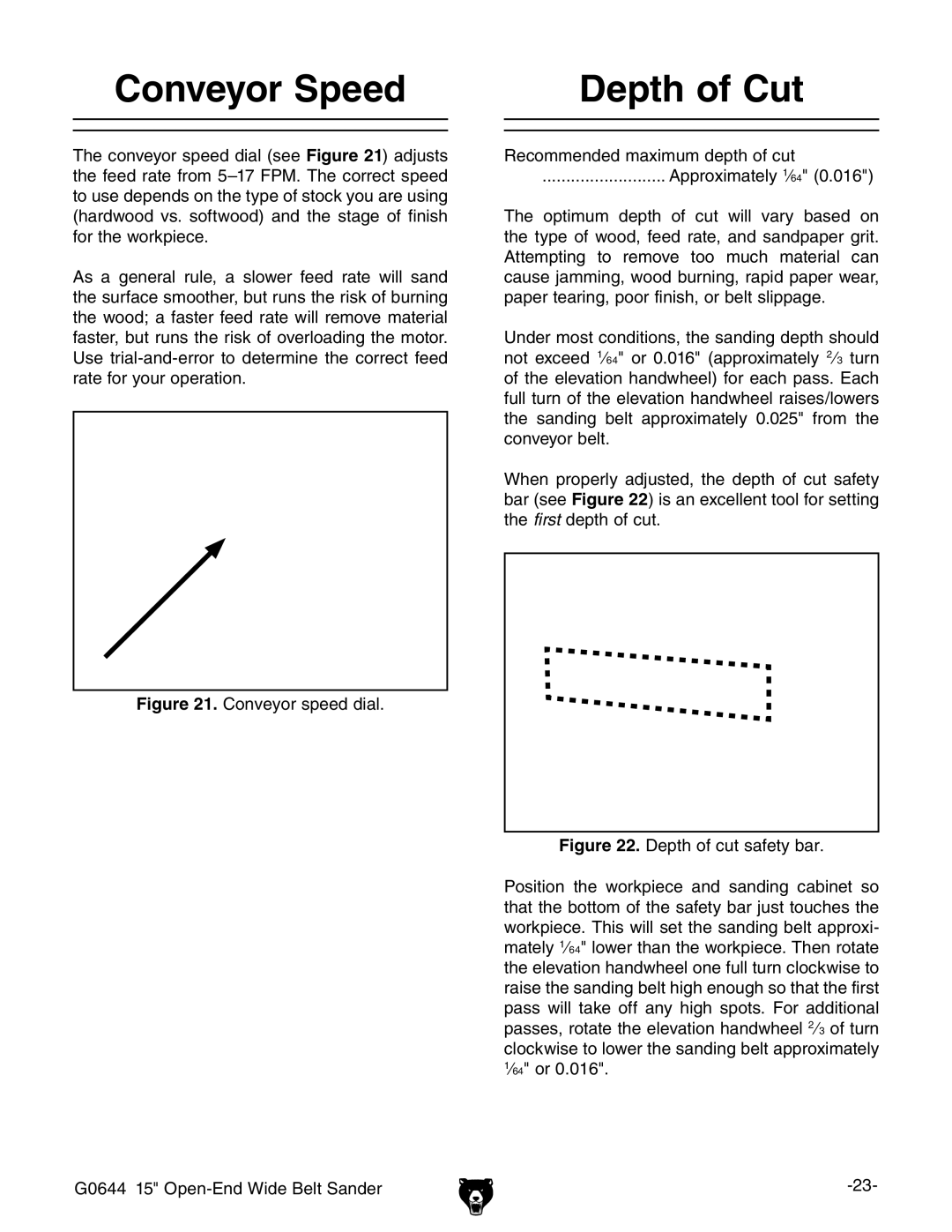
depth of cut
Conveyor Speed
The conveyor speed dial (see Figure 21) adjusts the feed rate from
As a general rule, a slower feed rate will sand the surface smoother, but runs the risk of burning the wood; a faster feed rate will remove material faster, but runs the risk of overloading the motor. Use
Figure 21. Conveyor speed dial.
conveyor feed rate
Depth of Cut
Recommended maximum depth of cut
.......................... Approximately 1⁄64" (0.016")
The optimum depth of cut will vary based on the type of wood, feed rate, and sandpaper grit. Attempting to remove too much material can cause jamming, wood burning, rapid paper wear, paper tearing, poor finish, or belt slippage.
Under most conditions, the sanding depth should not exceed 1⁄64" or 0.016" (approximately 2 ⁄3 turn of the elevation handwheel) for each pass. Each full turn of the elevation handwheel raises/lowers the sanding belt approximately 0.025" from the conveyor belt.
When properly adjusted, the depth of cut safety bar (see Figure 22) is an excellent tool for setting the first depth of cut.
Figure 22. Depth of cut safety bar.
Position the workpiece and sanding cabinet so that the bottom of the safety bar just touches the workpiece. This will set the sanding belt approxi- mately 1⁄64" lower than the workpiece. Then rotate the elevation handwheel one full turn clockwise to raise the sanding belt high enough so that the first pass will take off any high spots. For additional passes, rotate the elevation handwheel 2 ⁄3 of turn clockwise to lower the sanding belt approximately 1⁄64" or 0.016".
G0644 15" |
